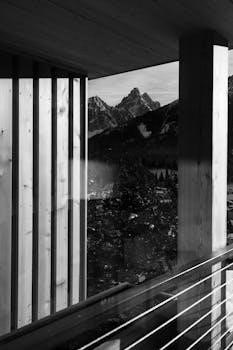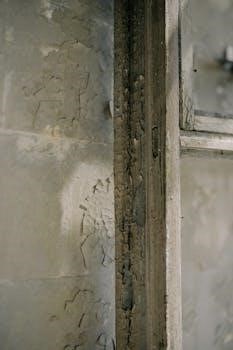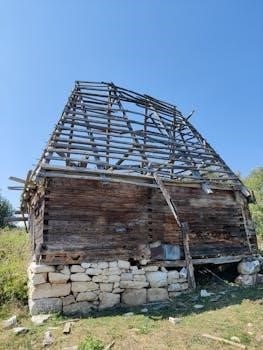
Traditional joinery is the classic hallmark of timber frame structures, representing an elegant and beautiful style of construction. These joints are where two separate timber pieces connect, creating a strong and stable frame.

What is Timber Framing?
Timber framing is a distinctive construction method where a robust wooden framework provides the primary support for an entire building. This technique utilizes heavy timbers, typically 6×6 inches or larger, creating a skeleton-like structure. What sets timber framing apart is its intricate wooden joinery, which distinguishes it from other heavy timber construction methods. The wooden beams are connected using various joints, carefully crafted to ensure the frame’s integrity and stability. Unlike modern construction where the frame is often concealed, timber framing proudly displays its structural elements, showcasing the beauty and craftsmanship of the joinery. This method relies on the precision and strength of the wooden connections, instead of nails or screws, and the frame bears the weight of the building and its components. It is a time-honored technique, and it emphasizes natural materials and the art of woodworking.
The Importance of Joints in Timber Framing
Joints and joinery are fundamental to timber framing; they are what define a timber frame structure. The joints are the critical points where the timber components connect, forming a strong and cohesive framework that supports the entire building. The integrity of the structure hinges on the quality and precision of these joints, as they must withstand various forces such as tension, compression, and shear. Traditional timber framing relies on the strength of these joints, and ensuring they remain solid over time is essential for the structure’s longevity. These joints enable the transfer of loads between horizontal and vertical timbers, and also contribute to the overall stability of the frame. The type of joint selected directly affects a building’s aesthetic, structural integrity, and longevity.

Common Timber Framing Joints
There are various common timber frame joints, each with its own benefits and applications. The choice of joint will depend on aesthetic preferences, the builder’s skills, and the project’s structural requirements.
Mortise and Tenon Joint
The mortise and tenon joint stands as the fundamental connection in timber framing, a technique employed for millennia. A tenon, a projecting piece of wood, fits precisely into a mortise, a cavity cut into another timber. This classic joint is the primary method of joinery in timber frames, and other joinery is generally a variation of it. The connection is further strengthened and stabilized by a peg inserted into the joint. This joint is engineered to resist tension, compression, and shear forces, making it a cornerstone of robust timber frame construction. It is the most commonly used joinery in timber framing systems and is a basic concept in wooden structures. The mortise is the notching into a post or truss plate to receive the tenon. This type of joint is crucial for the structural integrity of buildings and furniture pieces.
Dovetail Joint
The dovetail joint, another common timber frame joint, is known for its unique beauty and is often used in furniture construction. Unlike mortise and tenon joints, the dovetail joint does not typically rely on pegs or other fasteners for securing the connection. Instead, the interlocking, trapezoidal-shaped tenons, called tails, fit into corresponding mortises, forming a very strong connection that resists being pulled apart. This joint provides a robust and aesthetically pleasing joinery solution. The dovetail joint is known for its strong connection. It is a very common joint in timber framing. It is an intricate joint, and the beauty of the joint is a key element. It differs from other mortise and tenon framing in that there is no peg or other form of securing the joint. The tails and pins of the joint interlock to provide strength and stability.
Half-Lap Joint
The half-lap joint is a practical and versatile option, commonly used in both framing and furniture construction. This joint is created by removing half the thickness of each timber at the joining point, allowing the two pieces to overlap and create a flush surface. The half-lap joint offers a significant glue surface and a shoulder, which helps to square the frame. While this type of wood joint can potentially weaken the strength of adjacent boards, it is stronger than butt joints. It is relatively easy to handle, provides both decoration and structural support, and is often utilized on long runs and at 90-degree intersections. It is carefully engineered to resist tension, compression, and shear forces. The frame remains uniform in thickness, and this is a great advantage.
Scarf Joint
The scarf joint is a crucial technique in timber framing, designed to join two beams end-to-end, effectively creating one longer beam from two shorter pieces. This joint can be implemented using sloping interfaces to maximize the connection strength. The scarf joint is not merely a simple connection; it is carefully engineered to resist tension, compression, and shear forces. There are various forms of scarf joints, each designed to address particular structural needs. Some scarf joints are reinforced with concealed steel plates and pins for added strength. Scarf joints are essential in timber construction because they allow the use of shorter timber lengths to create longer spans, making them economical and practical for building large structures.
Tongue and Fork Joint
The tongue and fork joint, also known as an open tenon or open mortise and tenon joint, is a distinctive method in timber framing. This joint is characterized by a through mortise that is open on one side, forming a fork shape. Primarily, it is used to join rafter tops, and it also finds application in scarf joints and occasionally as sill corner joints in timber framing. The open nature of the joint allows for easier assembly and adjustment during construction. The tongue and fork joint provides a secure connection while allowing for some flexibility, making it suitable for various structural applications. This joint demonstrates how different types of joints can be combined for specific purposes within a timber frame.
Butt Joint
The butt joint is a fundamental and straightforward type of joint in woodworking, often used in timber framing. It involves simply placing the ends of two pieces of wood together without any specialized cuts or shaping. This simplicity makes it a common choice for basic framing work, construction, and other applications where additional fasteners provide necessary strength. While the butt joint is easy to execute, it relies heavily on supplementary elements like nails, screws, or adhesives to ensure structural integrity. Due to its simplicity, the butt joint is generally considered the weakest type of wood joint and is not typically used in load-bearing applications without added support. Its use is more common in situations where strength is not paramount, or where other structural elements provide support.

Specialized Timber Framing Joints
Beyond the common joints, timber framing utilizes specialized techniques like the diminished housing, wedged mortise and tenon, and king post and tie beam joints, each with unique structural advantages.
Diminished Housing Joint
The diminished housing joint is a specific variation of the mortise and tenon, primarily used in timber framing. It features a tenon, the projecting piece of wood, that fits into a mortise, the cavity cut into another timber. This joint is carefully designed to enhance the structural integrity of the frame, providing superior strength and stability. The tenon is not fully exposed, and it is usually shorter than standard mortise and tenon joints. This design makes it ideal for situations where the full tenon may not be suitable for the timber, providing a secure and reliable connection. This type of joint is particularly well-suited for timber frame construction where stability and durability are critical; The diminished housing helps to prevent the tenon from twisting or pulling out under stress, making it a very reliable choice for timber construction. It is also used in cases where a cleaner look is required.
Wedged Mortise and Tenon Joint
The wedged mortise and tenon joint is a classic and enduring method in timber framing, known for its exceptional strength and durability. This joint involves a tenon, or tongue, that fits snugly into a corresponding mortise, or cavity, cut into another timber. The unique feature of this joint is the use of wedges. After inserting the tenon into the mortise, wedges are driven into slots at the end of the tenon, expanding it and creating a very tight and secure connection. The wedges are made of hardwood to ensure a durable hold, providing a mechanical lock that prevents the joint from pulling apart, making it exceptionally resistant to tension and shear forces. This method is employed in many timber frame structures where a strong connection is crucial. This is a popular method due to its reliability and longevity.
King Post and Tie Beam Joint
The king post and tie beam joint plays a pivotal role in enhancing roof stability, offering rotational stiffness both in the plane of the truss and perpendicular to it. This specific joint demonstrates the versatility of timber frame joinery, illustrating how different types of joints can be combined to achieve structural integrity. The tie beam, a horizontal beam, resists the spreading force of the roof onto the walls, while the king post, a vertical post, is connected to the center of the tie beam. The joint is carefully engineered to transfer loads effectively, contributing to the overall strength and stability of the roof structure. It often uses mortise and tenon connections, sometimes reinforced with steel elements, to ensure a strong and reliable connection between the tie beam and the king post. This method is critical in ensuring the longevity of the timber frame structure.

Advanced Timber Framing Joinery
Advanced techniques include complex connections that offer enhanced structural integrity and unique design elements; These methods go beyond basic joints, showcasing the intricate skill and artistry involved in timber framing.
Offset Mortise and Tenon
The offset mortise and tenon joint is a clever solution when two beams connect into one post at the same height. The primary goal is to create a secure connection without compromising the structural integrity of the post. This joint involves offsetting the mortises on the post, allowing two tenons from the beams to connect without overlapping directly on top of each other. This technique is crucial when aiming for a strong connection while avoiding too much material removal from the supporting post. It allows for a strong and stable joint, distributing the load effectively. This method requires careful planning and precise execution. The joint is a testament to the versatility of timber framing joinery, allowing for complex structural designs. It provides strength while also making an efficient use of the timber. This approach allows for more flexibility in timber frame designs.
Stop-Splayed Scarf Joint with Sallied Abutments
The stop-splayed scarf joint with sallied abutments is an intriguing variation of the standard stop-splayed scarf joint. In this advanced technique, the stops, which are the areas of the joint designed to prevent movement, are angled or “sallied.” This adds a unique twist to the standard joint and is a great example of how different joints can be combined. This type of joint is often seen when a post connects to a tie beam, which is a horizontal beam that runs perpendicular to the ridge and is crucial for resisting the roof’s spreading force. The sallied abutments provide additional stability and strength to the joint, particularly when dealing with heavy loads. This joint demonstrates the intricacies of timber framing and the creativity of timber framers. This is an example of a common assembly in timber framing. The stop-splayed scarf joint is a great example of how even familiar joints can be adapted.